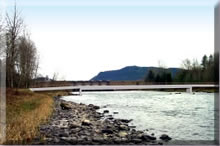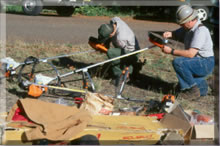 |
 |
||||||||||||||||||||||||||||||||||||||||||||||||||||
|
| |||||||||||||||||||||||||||||||||||||||||||||||||||||
 |
NWP: Willamette Valley Project Trail Connections
Lake: Willamette Valley Projects Partners: USACE; Lane County Parks Department; Eugene-to-Pacific Crest Trails Committee; USDA Willamette National Forest; City of Lowell; Oregon Parks and Recreation Department; Oregon Bridge Engineering Consultants Partnership Type: MOU Corps POC: Wade Stampe, Operations Project Manager; Bryan vonBargen, Natural Resource Manager; Dustin Bengtson, Park Manager Story: The Eugene-to-Pacific Crest Trail (EPCT) is a 108-mile-long multi-purpose recreation trail connecting the city of Eugene with the Cascade mountain range. This trail links a myriad of federal, state, and private lands before connecting with the renowned Pacific Crest Trail. Established as part of a statewide comprehensive trails plan in the 1970s, the EPCT became a reality through a series of public and private cooperative efforts. Today the trail is approximately 90 percent complete. A major hurdle in realizing the vision of a contiguous trail has been the crossing of the Middle Fork Willamette River, on Corps of Engineers property near Dexter Dam, now called the Bristow Crossing. In 2000, the Portland District entered into a multi-agency MOU outlining the need for the mutual support necessary to bring the estimated $450,000 project to completion. In September of 2003, the Willamette Valley project was awarded a $150,000 grant, the largest recreation trail grant in state history, through the Federal Highways Administration for design and procurement of major structural components. End spans for the bridge, donated by the U.S. Forest Service, were obtained for the cost of shipping. These funds and materials, combined with an estimated $60,000 in donated engineering/design and construction management services from Oregon Bridge Engineering Consultants (OBEC), have moved the project much closer to completion. Other cooperative ventures, from trail fundraisers to maintenance activities, continue to provide essential support to this unique recreation feature. The partnering group provides everything from labor to technical assistance to support the dedicated volunteers who have made the trail a reality. |
|
|||||||
|
| |||||||||

